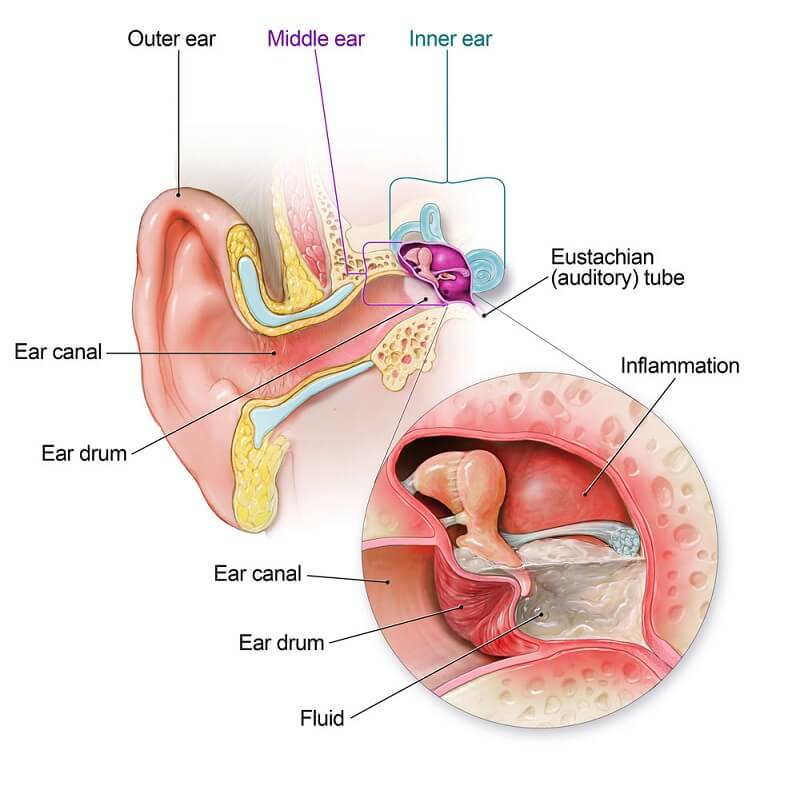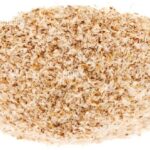Dear Readers, The ear is well prepared against pathogens. Greasy ear wax lies like a protective layer over the outer part of the ear canal and keeps the skin supple there. It ensures that dirt and water are repelled by an acid barrier. It also contains substances that fight bacteria and keep insects away.
If this protective layer is removed for example by frequent washing or extensive swimming and diving. And above all by manipulation with ear sticks or the like, small injuries can occur in the ear canal skin and pathogens can penetrate the ear. A healthy ear canal cleans itself. Dirt and dead skin cells are collected and transported out of the eardrum as part of the ear wax.
Children are particularly susceptible to ear infections because the connection between the nasopharynx and the tympanic cavity as part of the middle ear, the so-called ear trumpet, is shorter and wider than in adults. Therefore, the ear trumpet may swell with a simple runny nose.
This means that the secretion can no longer drain properly and the good breeding ground is created for all pathogens. Over 80% of children develop acute otitis media in their first years of life, especially with simultaneous hyperplasia of the pharynx, the so-called polyps in childhood.
What Causes Ear Infections?
Otitis
Both viruses like flu or herpes viruses and bacteria can cause ear infections. Acute otitis media often precedes by a stuffy nose as part of a cold. As a result, the passage between the nasopharynx and middle ear is not ventilating and the pathogens from the throat can be carries off and become lodge in the middle ear. As a result, the mucous membrane in the middle ear becomes inflame and produces secretions. A simple bacterial infection can quickly lead to an additional bacterial infection (so-called superinfection).
In some cases, there is already a defect in the eardrum through which germs can penetrate directly into the middle ear via the external auditory canal. There is less of a risk of pathogens being transport to the middle ear via the blood. This can happen for example with a scarlet fever disease.
Read about: For Body and Soul: Pilates its Main Advantages and Best Exercises Videos
Ear inflammation
It is usually caused by bacteria, more rarely by viruses or fungi causes. Often an excessive use of ear sticks is the trigger. Due to the rounded tip of the ear stick, the physiological ear wax is only pushed further into the ear canal and sits directly in front of the eardrum. This leads to acute one-sided hearing loss and also carries the risk of an eardrum injury or an ear canal injury. This creates an optimal breeding ground for penetrating bacteria.
If there is an additional constriction of the ear canal, for example, due to bony adhesions, both the removal of the ear wax and the drainage of water in the ear canal are difficult or impossible. This results in insufficient ventilation of the ear, as is the case with frequent use of earplugs or hearing aids.
Especially in the summer months with frequent visits to the swimming pool, there is a frequent occurrence of so-called bathing otitis. Because the water causes the ear canal skin to float so that bacteria can easily settle in the moist environment.
Furthermore, the occurrence of ear canal infections in immunocompromised patients, for example in the context of diabetes mellitus, gets an increase.
How are Ear Infections Transmitted?
Inflammation of the middle ear is usually not contagious. It is different from the inflammation of the ear canal. Here, contamination can occur via contaminated bathwater. Earplugs can also lead to transmission of the infection when used together.
What are the Signs of the Disease?
Otitis
Typical complaints of otitis media are stinging or pounding pain in the ear. External sounds often sound muffled due to the increased discharge in the tympanic cavity. Another sign of inflammation can be fever and fatigue.
In response to the lack of ventilation, the mucous membrane in the middle ear produces an inflammatory fluid that can become purulent and cannot flow into the nasopharynx due to the swollen ear trumpet.
As a result of this, the pressure increase can cause the eardrum to tear and thus lead to purulent ear discharge. The pain usually subsides immediately. As a rule, the eardrum defect heals easily within two weeks. Small children can sometimes have a fever of up to 40 ° C and the general complaints can also be accompanied by unspecific symptoms such as abdominal pain.
Ear Inflammation
In-ear canal infections, the ear is often itchy and red. It wets and is very sensitive to touch. Chewing or speaking causes pain. If the ear canal becomes swollen due to the inflammation, the hearing may also be impaired.
The illness complaints resemble those of an otitis media.
Leave your feedback













Hey Sazia,
In most cases, ear infections affect the outer and middle section but it can be cured easily with the help of specialist doctors.
Problems hearing out of the infected ear is more common in inner ear infections than in middle ear infections.
Indeed, the most common type of ear infection is well known otitis media. It is caused by swelling and infection of the middle ear.
Eventually, thanks for sharing these valuable tips with us.
With best wishes,
Amar Kumar